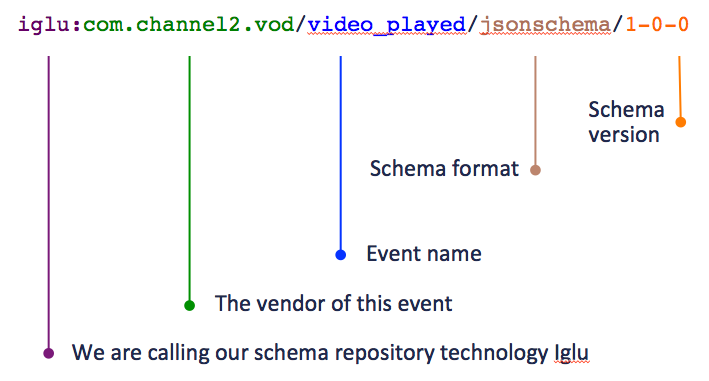Self describing JSONs
This page is adapted from the Snowplow Analytics blog post, Introducing self-describing JSONs.
In this section, we will be describing the approach we chose to link together a JSON with its JSON Schema in order to make it self-describing. Instead of embedding the JSON Schema directly into the JSON itself which would be very wasteful in terms of space, we chose only to store a reference to its JSON Schema.
For example, let's say we have a JSON representing a click on an ad like so:
{
"bannerId": "4acd518feb82"
}
which is supposed to conform to this self-describing JSON Schema:
{
"$schema": "http://json-schema.org/schema#",
"self": {
"vendor": "com.snowplowanalytics",
"name": "ad_click",
"format": "jsonschema",
"version": "1-0-0"
},
"type": "object",
"properties": {
"bannerId": {
"type": "string"
}
},
"required": ["bannerId"],
"additionalProperties": false
}
Our self-describing JSON will look like this:
{
"schema": "iglu:com.snowplowanalytics/ad_click/jsonschema/1-0-0",
"data": {
"bannerId": "4acd518feb82"
}
}
Notice the two main differences compared to our original JSON:
- There is a new
schemafield located at the root of the JSON which contains (in a space-efficient format) all the information required to uniquely identify the associated JSON Schema. The schema's URI follows the following pattern:

- The data contained in the original JSON has been encapsulated in a
datafield to prevent any accidental collisions should the JSON already have aschemafield
This way, our JSON becomes de facto self-describing, embedding a link to its JSON Schema.
Back to Common architecture.